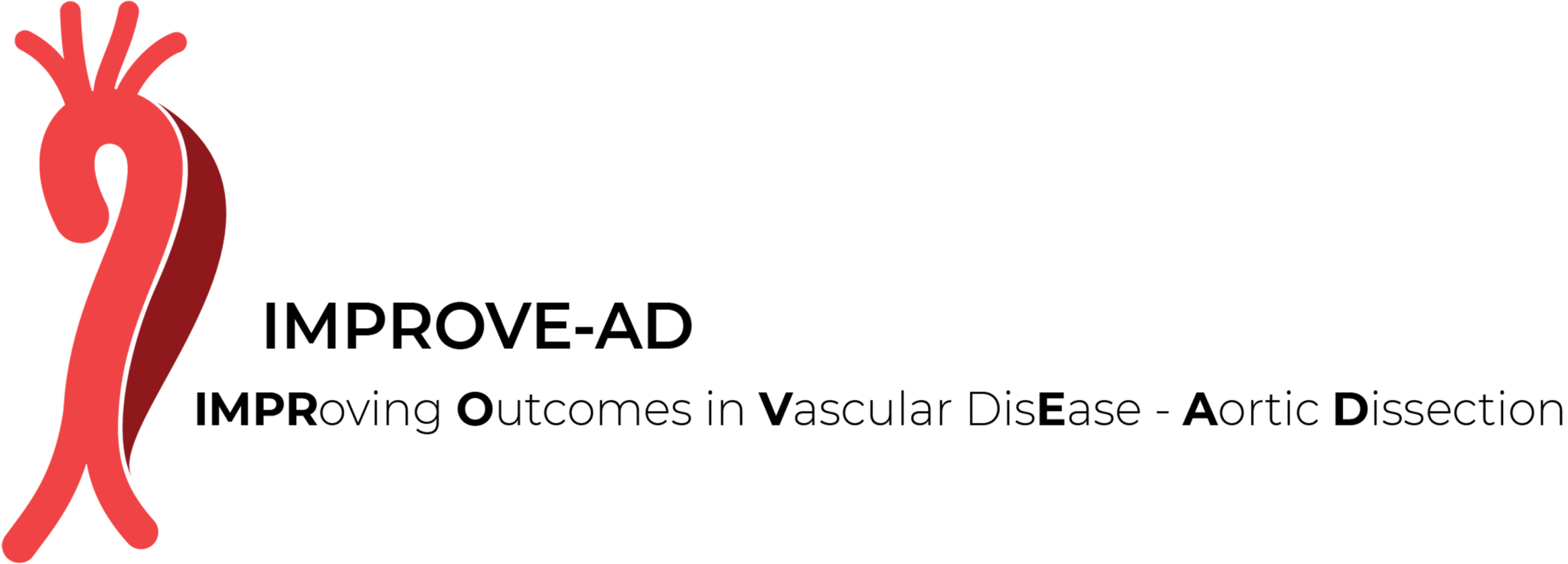
Because high-quality evidence from large, prospective multicenter trials on the best treatment of uncomplicated type B aortic dissection (uTBAD) is scarce, SVS members Firas F. Mussa, MD, a professor of vascular surgery at UT-Houston in Houston, Texas, and Panos Kougias, MD, chair of the Department of Surgery at SUNY Downstate Health Sciences in New York City, are moving forward with a large randomized trial to address this unmet need. Other principal investigators are Manesh Patel, MD, Seekanth Vemalapalli, MD, and Sean O’Brien, PhD, from Duke Heart Center, Duke University and Duke Clinical Research Institute (DCRI) in Durham, North Carolina, the award recipient institution. Sherene Shalhub, MD, head of vascular surgery at Oregon Health Sciences University in Portland, Oregon, will lead the patient engagement.
This prospective, pragmatic, randomized clinical trial, entitled IMPROVE-AD (Improving outcomes in vascular disease—aortic dissection), will enroll its first patient by the end of the year.
Acute aortic dissection is the most common life-threatening aortic emergency, with 30–40% classified as uTBAD. The current standard-of-care consisting of optimal medical therapy with surveillance is appropriate in the majority of such dissections. However, recent data suggest early thoracic endovascular aneurysm repair, known as TEVAR, could be beneficial for some patients, said Mussa. In fact, the trial’s primary hypothesis is that the latter therapy will be superior.
The trial will assess clinical outcomes in patients with subacute uTBAD undergoing either upfront TEVAR plus medical therapy vs. medical therapy with surveillance for deterioration.
IMPROVE-AD is funded by the National Heart, Lung and Blood Institute (NHLBI) to enroll and randomize 1,100 patients at 60 sites in North America. It expected to last seven years and generate the sought-after quality evidence to guide daily clinical practice and future SVS guidelines.

Treatment of aortic dissection is a top SVS clinical research priority in aortic disease. Writing a letter of support to Mussa, SVS Immediate Past President Michael Dalsing, MD, said, “… it is our belief that this trial addresses a significant and timely question related to the care of patients with acute type B aortic dissection as there remains clinical equipoise when considering available treatment options at the time of initial presentation. When completed, your trial will provide strong evidence that will guide clinical practice in a safe and rational manner.”
Mussa has worked on the project for almost a decade, and, over the past several years, with support from other vascular surgeons, has refined the design and organization of the trial. “Until today, I wake up and think of the trial design, endpoint, ancillary studies, enrollment and how to get people engaged,” said Mussa.
Personnel at the 60 sites will collect baseline history, dissection-related data and in-hospital outcomes. Duke Clinical Research Institute will collect medical events.
To be included, uTBAD patients must be more than 21 years old and have no history of aortic intervention. The condition is defined as dissection without involvement of the aorta at, or proximal to, the innominate artery, without rupture and/or malperfusion (renal, mesenteric, or extremity). Patients will be randomized within 48 hours to six weeks, stratified by the presence of one of the high-risk features upon presentation.
Site investigators will determine all subsequent care (including additional testing, medications/procedures), with the exception of aortic interventions. Such interventions will be allowed for: acute complications (rupture and/ or malperfusion, embolization, or aortoesophageal/aortotracheal fistula), aneurysmal degeneration of more than 55cm, significant aortic growth of more than 5mm over a six-month period, or persistent pain and/or hypertension during index admission. All participants will have their blood pressure monitored remotely, with follow-up administered through the use of a centralized call center with physician adjudication of relevant cardiovascular and aortic events.
“In addition to determining the optimal treatment that leads to the best short-and long-term benefit, we also want to address other questions, including the impact of high-risk dissection features on outcomes,”said Kougias. “Also, we should aim to further understand what patients want; what are their priorities? That’s a critical part of what we should be asking.”
The trial’s primary endpoint is the composite of all-cause death or major aortic complications. Secondary endpoints are quality of life, cardiovascular hospitalizations, cardiovascular death and components of the primary endpoint.
The trial is sponsored by UT Health Houston, SUNY Downstate Health Sciences University, and Duke Clinical Research Institute. An IMPROVE-AD informational meeting held during VAM 2023 in June drew a crowd of surgeon-scientists and clinicians who wanted to learn more and become involved in the trial.
Meeting attendees had many suggestions and thoughts, including on the “diagnosis-to-intervention” timeframe, with most selecting the six-week mark as the endpoint for intervention to be included in the trial.
An attendee suggested the trial should include a parallel patient engagement plan to make sure patient voices are heard. Many indicated they are willing to enroll their patients. “Every one of you has a patient who would qualify,” Mussa pointed out to those in attendance. “My ‘ask’ of you is to please connect them with us.” He also asked surgeons to participate in the analysis and outcomes.
IMPROVE-AD investigators also have proposed several ancillary studies pending further funding.
Patrice Desvigne-Nickens, MD, from the NHLBI, stressed the importance of the shared partnership with the institute for the trial. “We really want this to go forward and succeed,” she said.
The trial has several unique features, she explained, including that it is pragmatic. “It will enroll every eligible patient and really answer vital questions for surgeons,” she said. “Medicine is a random distribution of what the physician decides to do.”
Determining systematically what is best in practice is a better way to make decisions, she added, encouraging all the surgeons in attendance to participate, either by enrolling patients or participating in analysis. “Your participation is really key,” Desvigne-Nickens concluded.











